Republicans used their control over state government to inflict tremendous damage on Iowa during the 2019 legislative session: underfunding education, blocking steps that would improve Medicaid services, dismantling effective sex education programs, further undermining workers’ rights, targeting health care for transgender Iowans, and giving Governor Kim Reynolds the ability to pack our highest courts with conservative ideologues.
The disastrous outcomes underscored the urgent need for Democrats to break the Republican trifecta in 2020. The Iowa House is the only realistic path for doing so, since Reynolds won’t be up for re-election next year, and the 32-18 GOP majority in the Iowa Senate will take several cycles to undo. State Representative Andy McKean’s recent party switch improved Democratic prospects, shrinking the Republican majority in the chamber from 54-46 to 53-47. Nevertheless, a net gain of four House seats will be no easy task for Democrats.
The Daily Kos Elections team calculated the 2018 election results for governor and state auditor in every Iowa House district. Jeff Singer discussed their key findings in a May 2 post: Reynolds carried 60 state House districts, Democratic nominee Fred Hubbell just 39. The “median seat backed Reynolds 51.0-46.3, a margin of 4.7 points. That’s about 2 points to the right of her statewide margin of 2.8 points.” Eight Democrats represent districts Reynolds carried, and one (Dave Williams) represents a district where Reynolds and Hubbell tied, while “only one Republican is in a Hubbell district.”
I’d encourage all Iowa politics watchers to bookmark the DK Elections number-crunching, as well as the team’s spreadsheet on 2016 presidential results by House district.
The Daily Kos team also looked at the 2018 voting for state auditor, seeking clues on which House seats might be within reach for Democrats. I don’t find that angle as useful. Previous State Auditor Mary Mosiman ran a terrible campaign. Not only did Rob Sand outwork Mosiman on the trail, he ran unanswered television commercials for six weeks, allowing him to go into election day with higher name ID than the incumbent, which is almost unheard of. Sad to say, Democrats won’t be outspending incompetent, little-known GOP candidates in the 2020 state legislative races.
Here’s my first take on both parties’ best pickup opportunities. What appear to be competitive state House seats may shift over the coming year, depending on candidate recruitment and incumbent retirements, so Bleeding Heartland will periodically return to this topic.
TOP DEMOCRATIC TARGETS
Three Republican-held seats are obviously at risk in the next election.
House district 55
State Representative Michael Bergan “won” in 2018 by nine votes according to the certified results. Republicans used their House majority to ensure that 29 absentee ballots would never be counted, even though constituents mailed them on time. Expect a spirited Democratic effort here, especially if Kayla Koether runs again, and/or Bergan retires.
FEBRUARY 2020 UPDATE: Koether announced on February 18 that she’s running for House district 55 again, while State Senator Michael Breitbach confirmed on February 10 he will retire in Senate district 28. Bergan has not clarified his plans, but he may run for the Senate district, which leans more Republican. Bleeding Heartland profiled the Senate district 28 race here.
LATER UPDATE: A reader says Bergan told the editor of the Calmar Courier that he will seek re-election to the House. I contacted the newspaper, where an employee said they have not published a story about this yet.
Current active registered voter totals: 5,797 Democrats, 6,438 Republicans, 7,192 no-party voters
2016 voting for president: Donald Trump 50.6 percent, Hillary Clinton 43.5 percent
2018 voting for governor: Reynolds 50.7 percent, Hubbell 46.0 percent
House district 67
This area of the Cedar Rapids suburbs has been trending away from Republicans. Former television news personality Ashley Hinson easily won in 2016 but was re-elected by only 52.0 percent to 48.0 percent for Eric Gjerde last November. She is the only House Republican representing a district that voted for Hubbell. Democrats will target this seat regardless but will have a particularly strong chance if Hinson runs for Congress in the first district, as many Republicans have encouraged her to do.
UPDATE: Hinson filed a statement of candidacy with the Federal Election Commission on May 13. I haven’t heard about other prospective GOP candidates for House district 67. Gjerde confirmed on May 13 that he will consider running here in 2020.
LATER UPDATE: Gjerde confirmed on July 8 that he’s running for the Iowa House again in 2020. No Republicans have declared for the open seat yet. The GOP voter registration advantage continues to shrink here.
Current active registered voter totals: 6,591 Democrats, 7,129 Republicans, 8,412 no-party voters
2016 voting for president: Trump 45.7 percent, Clinton 47.2 percent
2018 voting for governor: Reynolds 47.3 percent, Hubbell 50.2 percent
House district 82
Democrats never should have let this one get away last fall after the immense effort that went into holding the seat in a 2017 special election. Neither party targeted the race, and Republican Jeff Shipley defeated Phil Miller by just 37 votes, 50.1 percent to 49.8 percent. Democrats will likely encourage Miller to run again.
How hard Republicans will fight for Shipley is unclear. He has sometimes parted ways with his caucus, and a few of his idiosyncratic votes are clear liabilities, like being the only House member to oppose a bill increasing transportation funding for rural school districts. On the other hand, some of his stances will be popular in this district, which includes Fairfield. Shipley was among the Republicans who kept MidAmerican’s bad solar bill from passing. He offered an amendment on medical cannabis that would have legalized the use of the whole plant.
LATE UPDATE: Miller announced on September 4 that he will run for the state House again in 2020.
Current active registered voter totals: 6,403 Democrats, 6,319 Republicans, 5,712 no-party voters
2016 voting for president: Trump 57.8 percent, Clinton 36.5 percent
2018 voting for governor: Reynolds 54.4 percent, Hubbell 43.3 percent
SECONDARY DEMOCRATIC TARGETS
House district 9
Ann Meyer didn’t win this open-seat race by much, 51.7 percent to 48.2 percent for Megan Srinivas, even though the GOP heavily outspent Democrats on television advertising. On the other hand, Meyer now has the advantages of incumbency, and her district voted for Trump by a large margin.
Current active registered voter totals: 6,030 Democrats, 5,286 Republicans, 6,938 no-party voters
2016 voting for president: Trump 55.3 percent, Clinton 39.3 percent
2018 voting for governor: Reynolds 52.1 percent, Hubbell 46.0 percent
House district 16
Mary Ann Hanusa won a fifth term in 2018 by her narrowest margin yet, 49.5 percent to 48.4 percent for Steve Gorman, who received no significant help from the Democratic Party. Hanusa is now said to be considering a campaign for Congress in the third district. If she leaves this seat open, it’s a lean Republican race at best. One complicating factor: the well-liked and hard-working Gorman will run for Iowa Senate district 8 next year, rather than for House district 16.
Current active registered voter totals: 5,072 Democrats, 5,733 Republicans, 6,309 no-party voters
2016 voting for president: Trump 51.8 percent, Clinton 41.8 percent
2018 voting for governor: Reynolds 49.8 percent, Hubbell 47.4 percent
LATE UPDATE: Democrat Jen Pellant declared here on October 1. I speculated here on how she would match up against Hanusa.
House district 37
Neither party targeted this race last year, but Andrew Rasmussen gave Republican incumbent John Landon a surprisingly close race, losing by 52.0 percent to 47.9 percent. Although the voter registration totals here are daunting, Trump may perform more poorly in suburban areas like Ankeny than he did in 2016.
UPDATE: Rasmussen announced on May 13 that he will run again in 2020. This seat wasn’t on most people’s radar last year, but the GOP shouldn’t take it for granted again.
LATER UPDATE: Rasmussen announced on September 26 that he has decided against another legislative bid at this time.
Speculation now turns to Andrea Phillips, the first vice chair of the Iowa Democratic Party. She was Landon’s 2016 opponent and lost by about 3,000 votes after receiving little financial support from the party. Given recent political trends in the suburbs, Democrats would likely invest in this race. Faced with the prospect of having to work hard to be re-elected, Landon might even retire.
LATER UPDATE: Phillips announced on October 7 that she will run for the state House again.
Current active registered voter totals: 7,728 Democrats, 10,454 Republicans, 9,798 no-party voters
2016 voting for president: Trump 50.5 percent, Clinton 42.1 percent
2018 voting for governor: Reynolds 50.6 percent, Hubbell 47.5 percent
House district 73
State Representative Bobby Kaufmann is unlikely to be seriously threatened if he seeks re-election, having beaten Jodi Clemens by 55.7 percent to 44.2 percent in 2018. But if he runs for Congress in the second district, where U.S. Representative Dave Loebsack is retiring, all bets are off.
UPDATE: Kaufmann told James Q. Lynch of the Cedar Rapids Gazette on May 19 that he will seek re-election to the Iowa House instead of running for Congress.
Current active registered voter totals: 6,450 Democrats, 6,177 Republicans, 7,980 no-party voters
2016 voting for president: Trump 51.2 percent, Clinton 43.3 percent
2018 voting for governor: Reynolds 49.6 percent, Hubbell 48.3 percent
House district 91
A Democrat hasn’t represented the Muscatine area in the Iowa House since 2010. Democrats put a lot of money behind challenger Laura Liegois last year, but Gary Carlson won another term by 53.7 percent to 46.2 percent. UPDATE: Democrats will need to recruit a different challenger for 2020. Liegois announced this week that she is moving out of the district to become city manager for Chariton (Lucas County).
Current active registered voter totals: 5,651 Democrats, 5,721 Republicans, 7,486 no-party voters
2016 voting for president: Trump 49.8 percent, Clinton 43.7 percent
2018 voting for governor: Reynolds 50.5 percent, Hubbell 47.2 percent
House district 95
Louis Zumbach is well-liked and has opposed some extreme bills, like the 2018 “heartbeat” abortion ban. This year, he was among the House Republicans who blocked the solar bill. The GOP spent about $225,000 defending this seat in 2018, and Zumbach defeated Christian Andrews by 53.9 percent to 46.0 percent.
UPDATE: Andrews told Bleeding Heartland on May 21 that he will sound out district residents this summer and decide by September whether to run for the state House again in 2020.
LATER UPDATE: Andrews launched his campaign in October. Zumbach hasn’t decided whether he will seek re-election. Bleeding Heartland profiled the possible rematch here.
Current active registered voter totals: 6,323 Democrats, 6,467 Republicans, 8,643 no-party voters
2016 voting for president: Trump 51.6 percent, Clinton 41.9 percent
2018 voting for governor: Reynolds 50.9 percent, Hubbell 46.4 percent
TOP REPUBLICAN TARGETS
House district 38
In one of Iowa’s most politically balanced House districts on paper, Heather Matson defeated entrenched incumbent Kevin Koester in 2018 by about 500 votes, 51.5 percent to 48.4 percent. It won’t be easy for Republicans to unseat her, especially with Trump hurting his party among suburban women and college-educated voters. But the GOP won’t be short on cash and could invest in taking this seat back.
Current active registered voter totals: 7,204 Democrats, 7,498 Republicans, 7,682 no-party voters
2016 voting for president: Trump 49.8 percent, Clinton 42.9 percent
2018 voting for governor: Reynolds 47.3 percent, Hubbell 50.7 percent
House district 39
Karin Derry may be the most vulnerable House Democrat, having won by 305 votes (49.8 percent to 48.3 percent). Trump carried this suburban district, and voter registrations still heavily favor the GOP. If Republicans recruit someone more impressive than their previous incumbent Jake Highfill, I’d consider this a toss-up race. On the other hand, no one will outwork Derry and her band of volunteers. I highly recommend this post by Derry’s campaign manager on how they pulled off the upset.
Current active registered voter totals: 7,446 Democrats, 9,603 Republicans, 9,144 no-party voters
2016 voting for president: Trump 49.0 percent, Clinton 43.9 percent
2018 voting for governor: Reynolds 49.9 percent, Hubbell 48.4 percent
House district 44
Had Rob Taylor run for re-election in 2108, this district would have remained in Republican hands. Local GOP activists were perhaps overconfident about their prospects here following Taylor’s retirement. They nominated the relatively inexperienced Anna Bergman to face Kenan Judge, a perfect fit for the district. He won by 51.7 percent to 46.1 percent, a surprisingly large margin given the terrain. Judge is a dedicated door-knocker and has strong ties with constituents of all political persuasions. The GOP could have some recruitment troubles here. If they find a good candidate, though, the race should be competitive.
Current active registered voter totals: 7,566 Democrats, 9,983 Republicans, 11,556 no-party voters
2016 voting for president: Trump 47.8 percent, Clinton 45.0 percent
2018 voting for governor: Reynolds 48.1 percent, Hubbell 50.3 percent
House district 58
The Daily Kos team pointed out that the newest House Democrat, McKean, represents “the reddest seat in Democratic hands.” Republican Party of Iowa chair Jeff Kaufmann vowed to go after this district, but beating McKean will be easier said than done, given the incumbent’s decades of political success in the area. He received 69 percent of the vote against Joe Oclon in 2018. It’s rare for a legislator to leave the majority caucus for the minority, and McKean made that difficult choice for reasons grounded in principle, not ambition.
Current active registered voter totals: 6,566 Democrats, 5,241 Republicans, 9,631 no-party voters
2016 voting for president: Trump 57.8 percent, Clinton 37.1 percent
2018 voting for governor: Reynolds 56.1 percent, Hubbell 41.1 percent
LATE UPDATE: Republican Steve Bradley launched his campaign in late August. My thoughts on how he might match up against McKean are here. I’m viewing this race as a toss-up pending further information (like whom Democrats will nominate for president), but if I had to make a bet today, my money would be on McKean.
House district 60
Reynolds and Hubbell each received exactly 7,771 votes in this Black Hawk County district, the DK Elections team found. But Dave Williams knocked off Walt Rogers, a four-term incumbent who was also his neighbor, by 50.7 percent to 49.2 percent in the House race. Rogers attempted a comeback this year but fell short in the special election for Iowa Senate district 30. Given how GOP attack ads failed to deliver in that race, Republicans may not put a lot of money into an area that is trending away from them.
Current active registered voter totals: 6,721 Democrats, 7,071 Republicans, 7,838 no-party voters
2016 voting for president: Trump 48.8 percent, Clinton 45.2 percent
2018 voting for governor: Reynolds 49.2 percent, Hubbell 49.2 percent
SECONDARY REPUBLICAN TARGETS
House district 14
Republicans made a bit of a play here in 2018, but Tim Kacena won by 53.9 percent to 46.0 percent for Robert Henderson. This race would be a longshot for the GOP, but if they can find a strong challenger, a pickup isn’t outside the realm of possibility.
Current active registered voter totals: 5,738 Democrats, 4,148 Republicans, 5,089 no-party voters
2016 voting for president: Trump 47.3 percent, Clinton 47.7 percent
2018 voting for governor: Reynolds 47.0 percent, Hubbell 50.7 percent
House district 15
Democrats spent some money on defense here in 2018, but Charlie McConkey ended up winning by a comfortable margin, 56.3 percent to 43.6 percent for LeAnn Hughes. Iowa Senate district 8, covering this area, will be a battleground in 2020, so I expect Republicans to try to find a good candidate for the House race.
Current active registered voter totals: 5,241 Democrats, 4,434 Republicans, 6,301 no-party voters
2016 voting for president: Trump 51.5 percent, Clinton 41.9 percent
2018 voting for governor: Reynolds 48.0 percent, Hubbell 48.6 percent
House district 26
Republicans haven’t had recent success recruiting a credible candidate here. State Representative Scott Ourth’s challenger for the last two cycles, Rebel Snodgrass, got mixed up in a nasty dirty trick last year and lost to Ourth by 55.4 percent to 44.4 percent. On the other hand, this part of Warren County voted for Trump by a sizable margin. With a decent GOP contender, House district 26 could be on the table. A diligent door-knocker and postcard-writer to constituents, Ourth will take nothing for granted.
Current active registered voter totals: 6,429 Democrats, 7,013 Republicans, 7,532 no-party voters
2016 voting for president: Trump 53.5 percent, Clinton 39.6 percent
2018 voting for governor: Reynolds 51.8 percent, Hubbell 46.1 percent
LATE UPDATE: Ourth was charged with OWI in October, which could improve Republican prospects for this race. However, Ourth has outperformed the top of the Democratic ticket in each of the last four elections, and Iowa voters have re-elected several other state lawmakers following drunk driving arrests.
House district 52
Republicans put few resources behind their 2016 challenger Stacie Stokes and did not field a candidate here last cycle. So I’m not too worried about House Minority Leader Todd Prichard. On the other hand, the Daily Kos team noted that other than McKean, Prichard is the Democrat representing the House district that voted most heavily for Reynolds. Republicans may make some effort in this district next year to force Prichard to spend money at home.
Current active registered voter totals: 5,462 Democrats, 5,395 Republicans, 8,632 no-party voters
2016 voting for president: Trump 56.7 percent, Clinton 37.8 percent
2018 voting for governor: Reynolds 55.3 percent, Hubbell 42.5 percent
House district 64
As the saying goes, you can’t beat someone with noone. Republicans did not field a candidate against Bruce Bearinger in 2018. The Democrat easily dispatched his 2016 challenger, even as Trump carried his northeast Iowa district by double digits. So I doubt he will be seriously threatened next year. But Republicans could go after this seat if they find a decent candidate.
Current active registered voter totals: 5,085 Democrats, 4,612 Republicans, 8,388 no-party voters
2016 voting for president: Trump 53.4 percent, Clinton 40.3 percent
2018 voting for governor: Reynolds 51.4 percent, Hubbell 45.9 percent
Any comments about any prospective Iowa House races are welcome in this thread.
UPDATE: Three suburban districts Democratic candidates picked up in 2018 are missing from this list: House district 42 (Kristin Sunde), House district 43 (Jennifer Konfrst), and House district 68 (Molly Donahue). I didn’t forget about them. I expect Republicans to recognize these areas are trending away from the party. The GOP spent little in districts 43 and 68 last year and invested heavily in 42 mainly because their incumbent Peter Cownie was one of the top fundraisers in the caucus.
LATER UPDATE: Long-serving Democratic State Representative Mark Smith announced in September 2019 that he will retire at the end of his tenth term, which instantly puts House district 71 on the list of competitive races for reasons Bleeding Heartland discussed here.
NOVEMBER UPDATE: Democratic State Representative Mary Gaskill will run for re-election in 2020, the House Democrats announced on November 7. She represents House district 81, covering the Ottumwa area. Though Wapello County was a Democratic stronghold for decades, voters have been trending toward Republicans in recent years, which is also happening in other Iowa counties containing mid-sized cities. Some Democrats have privately expressed concern about holding House district 81 if Gaskill retires.

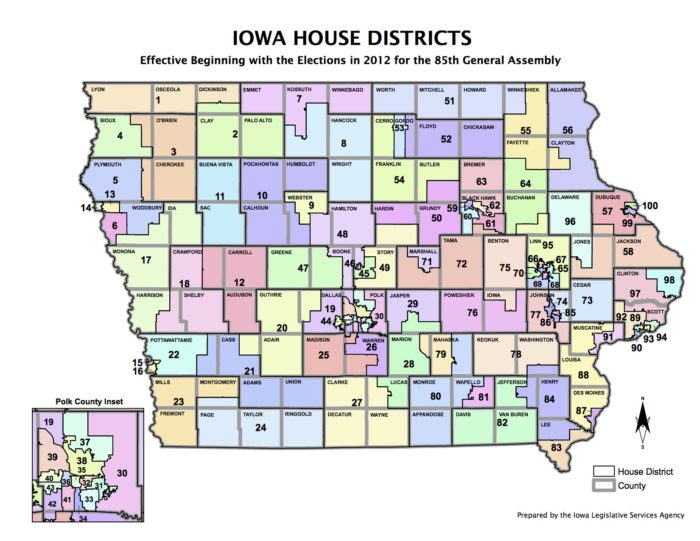
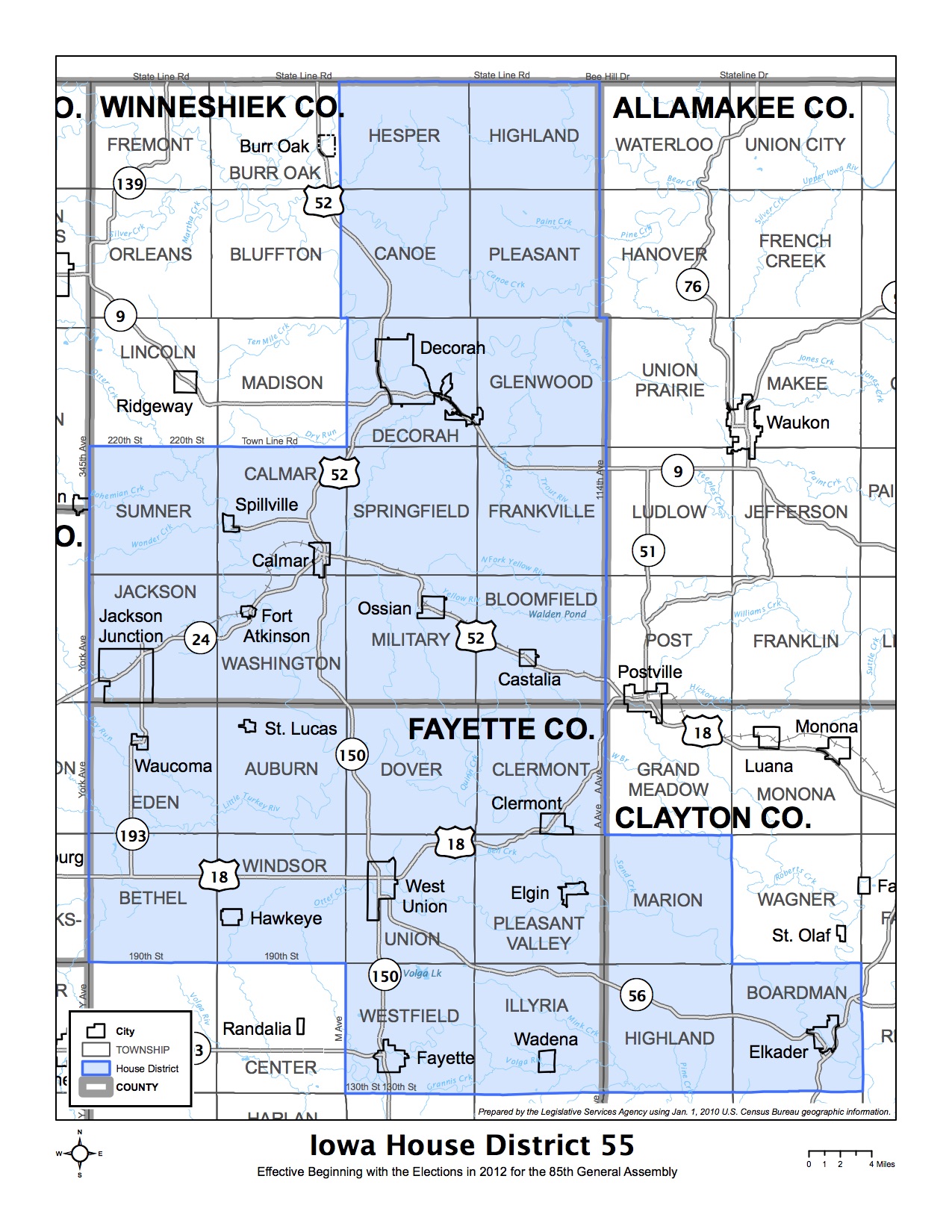
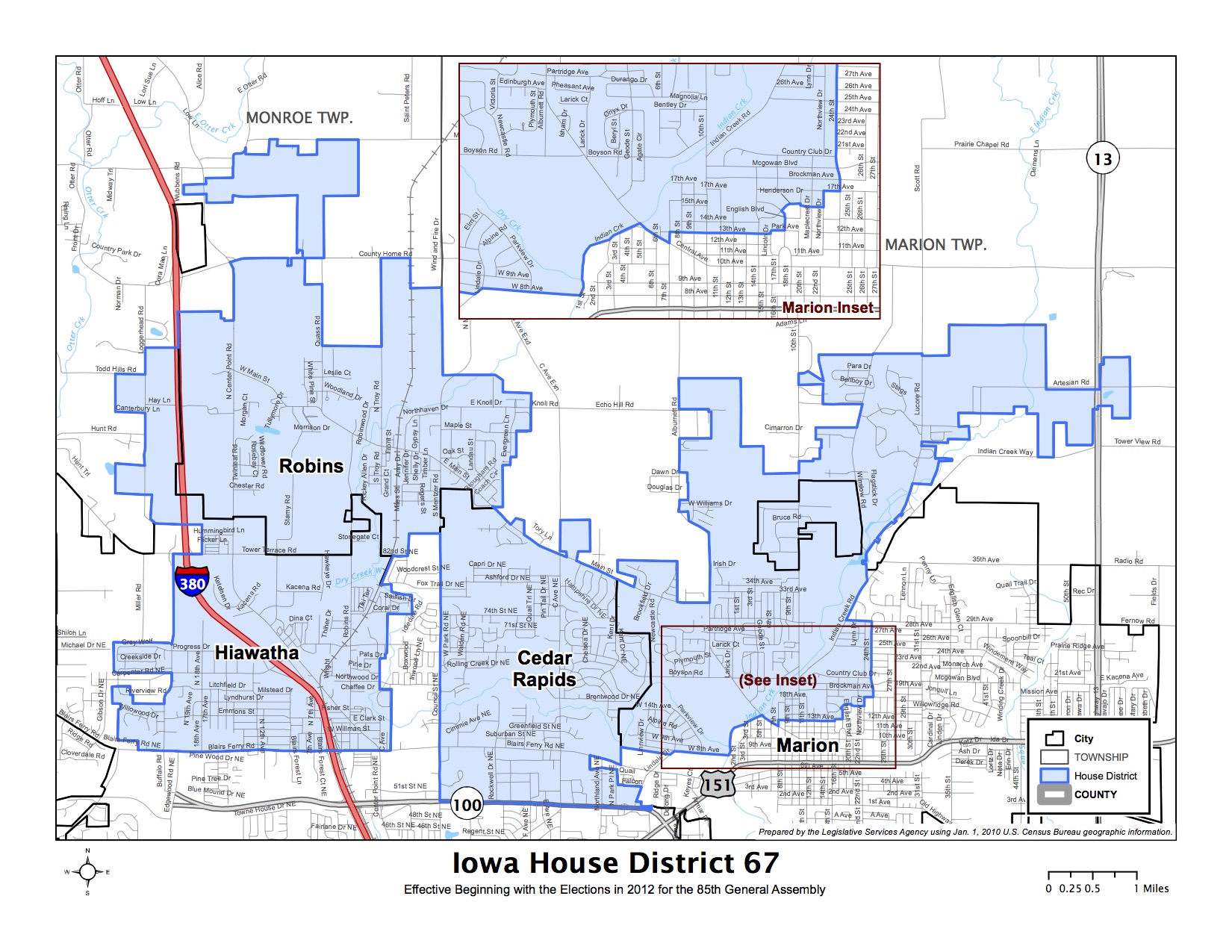
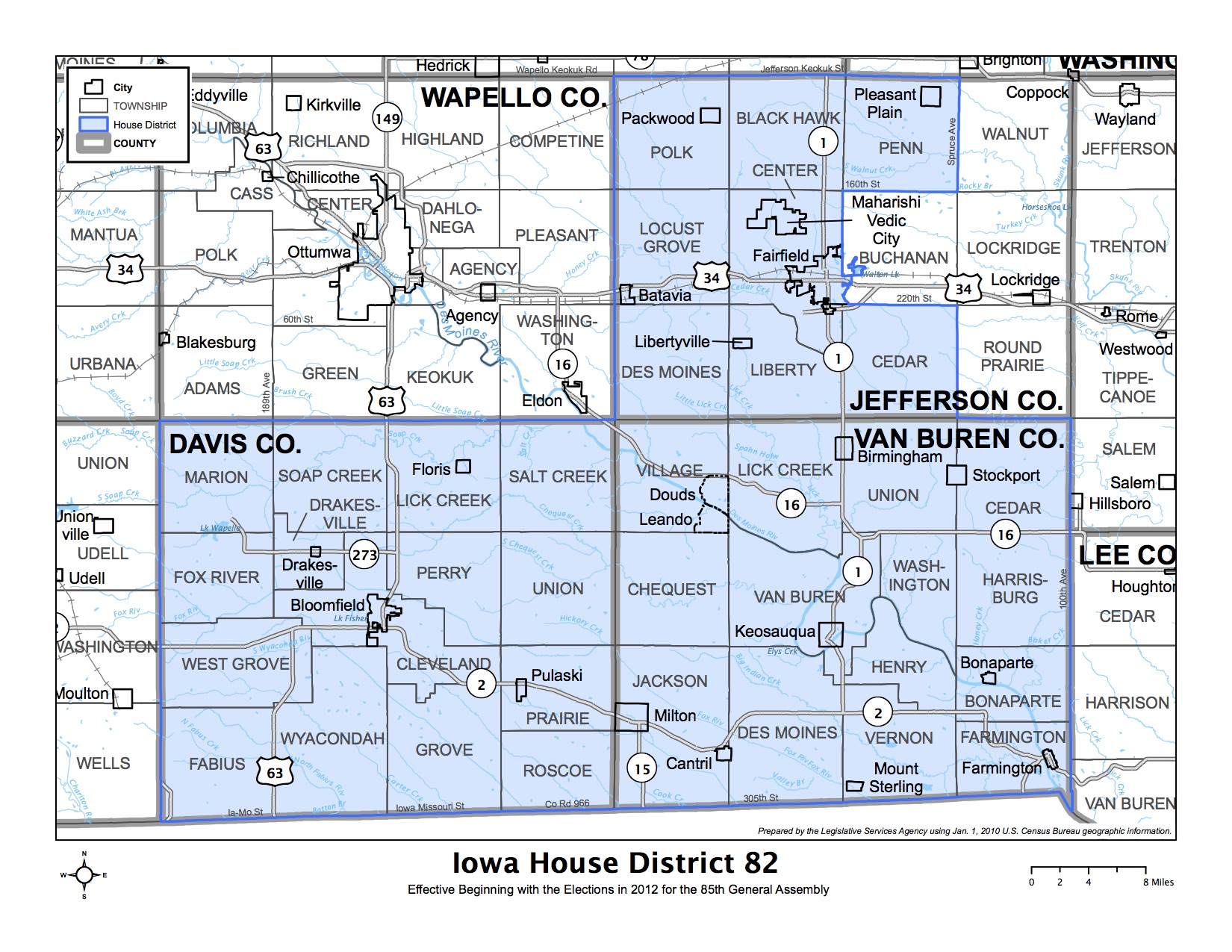
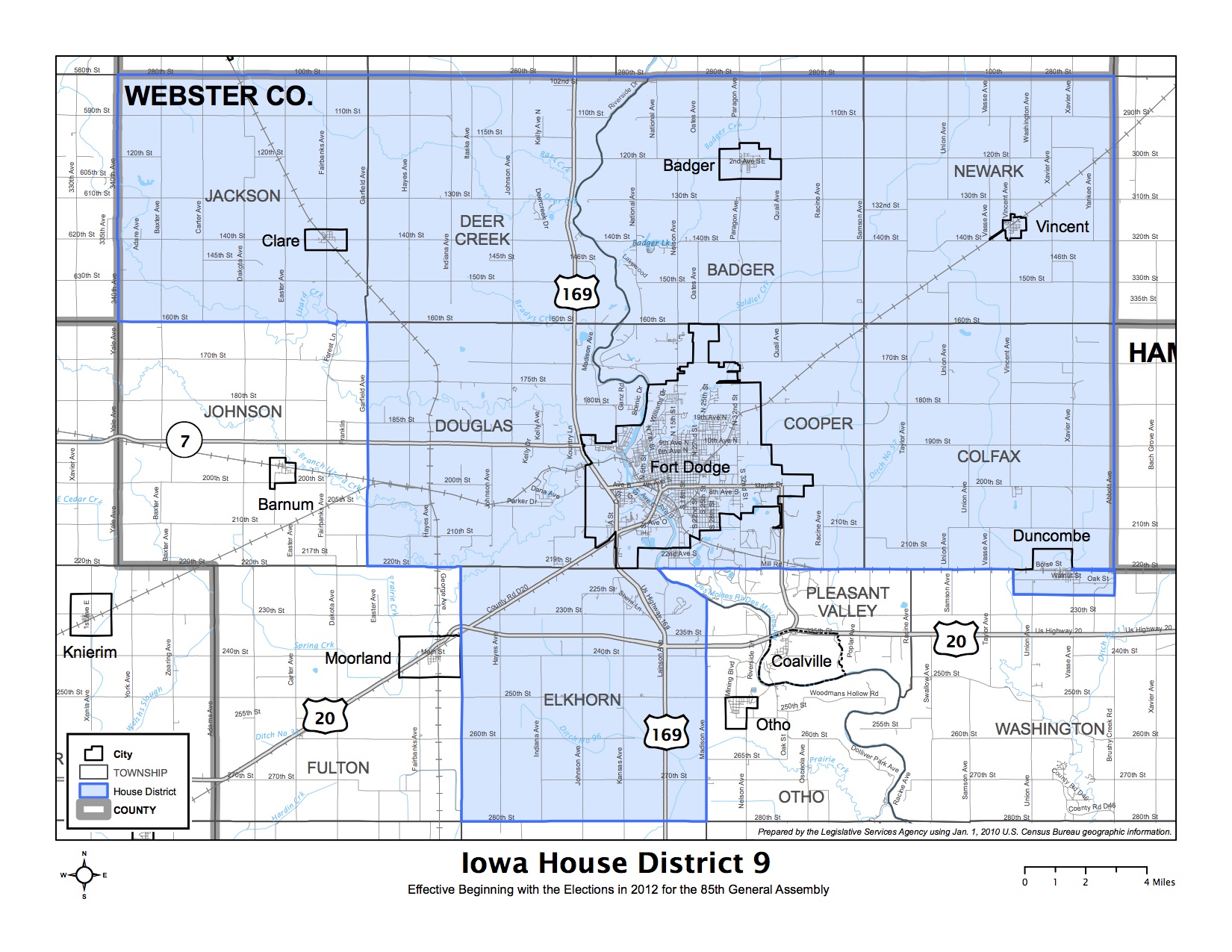
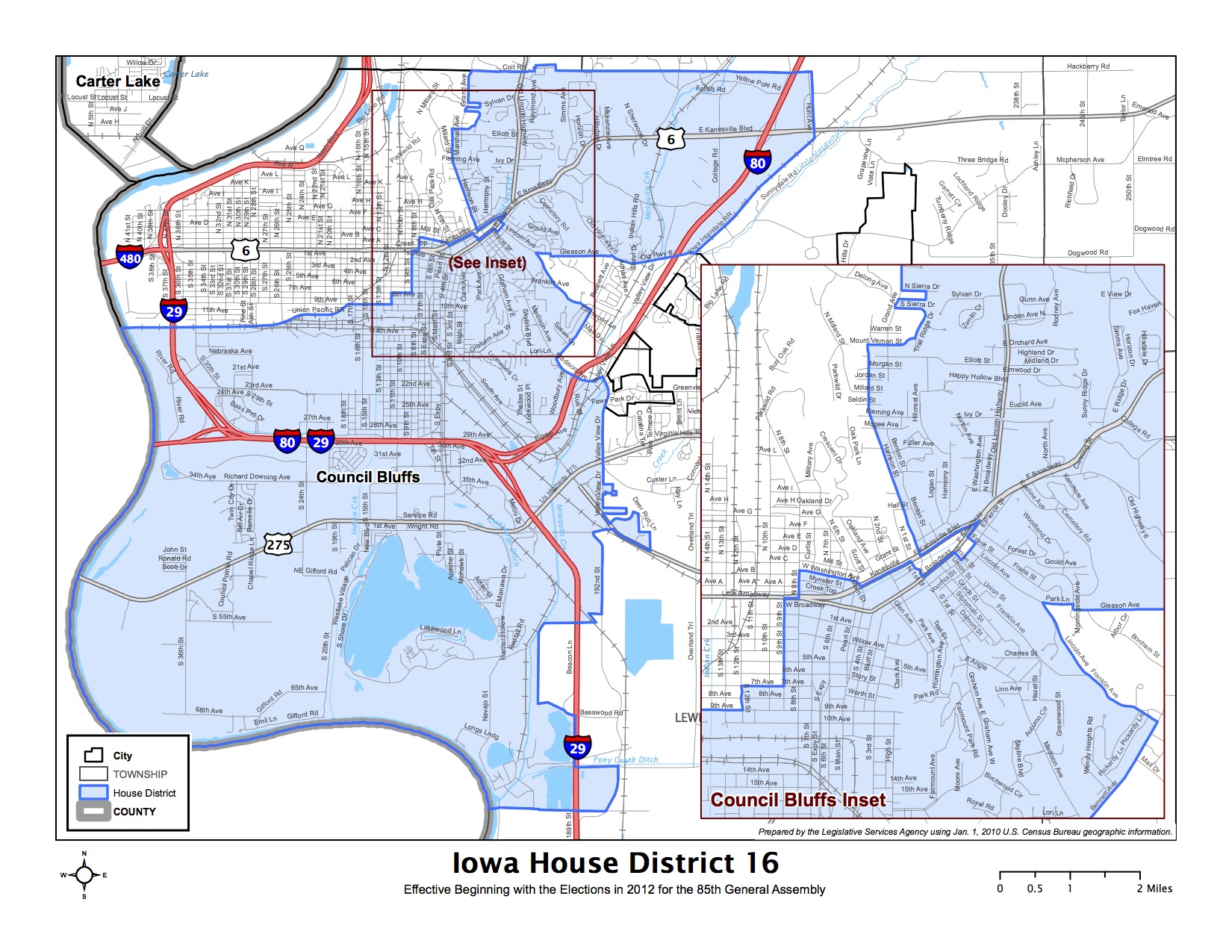
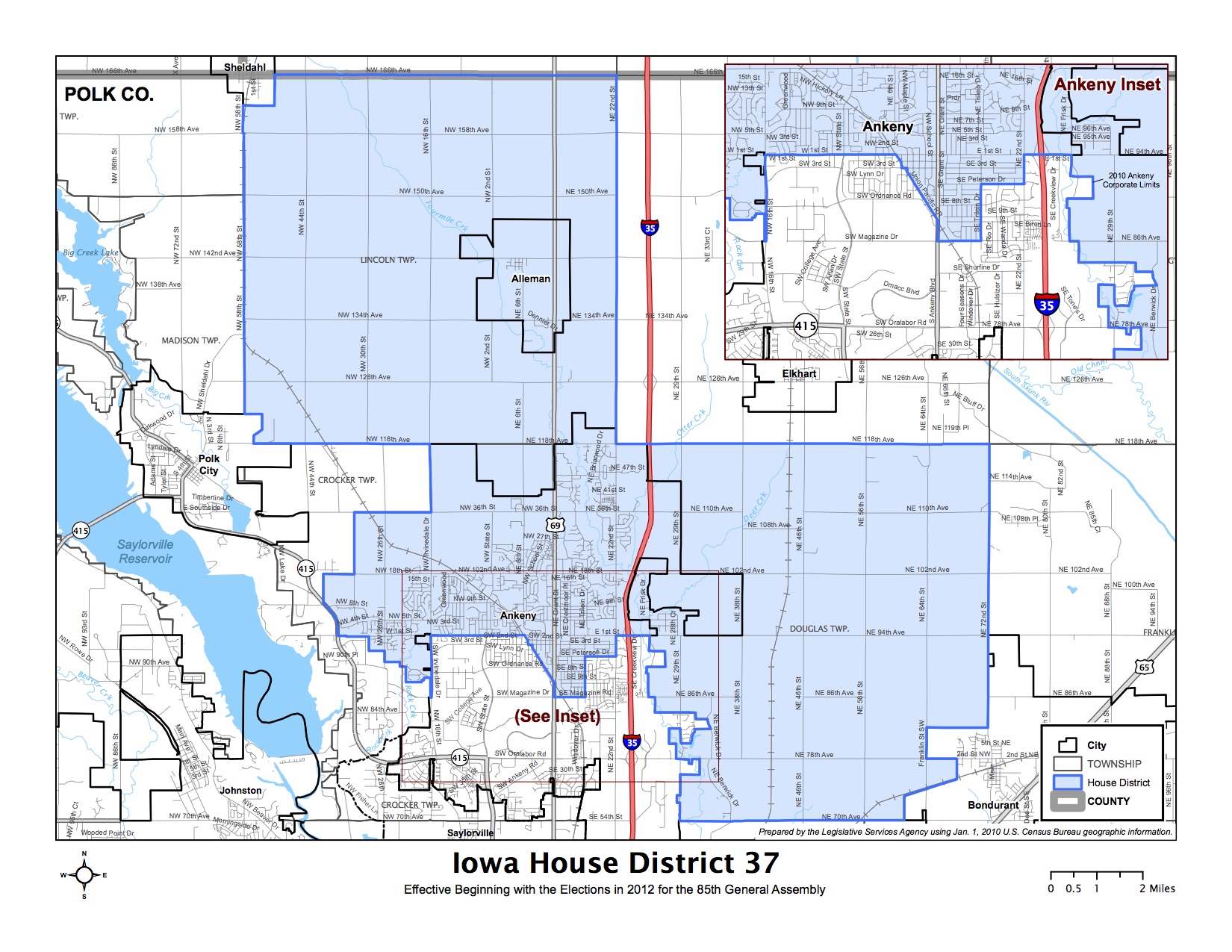
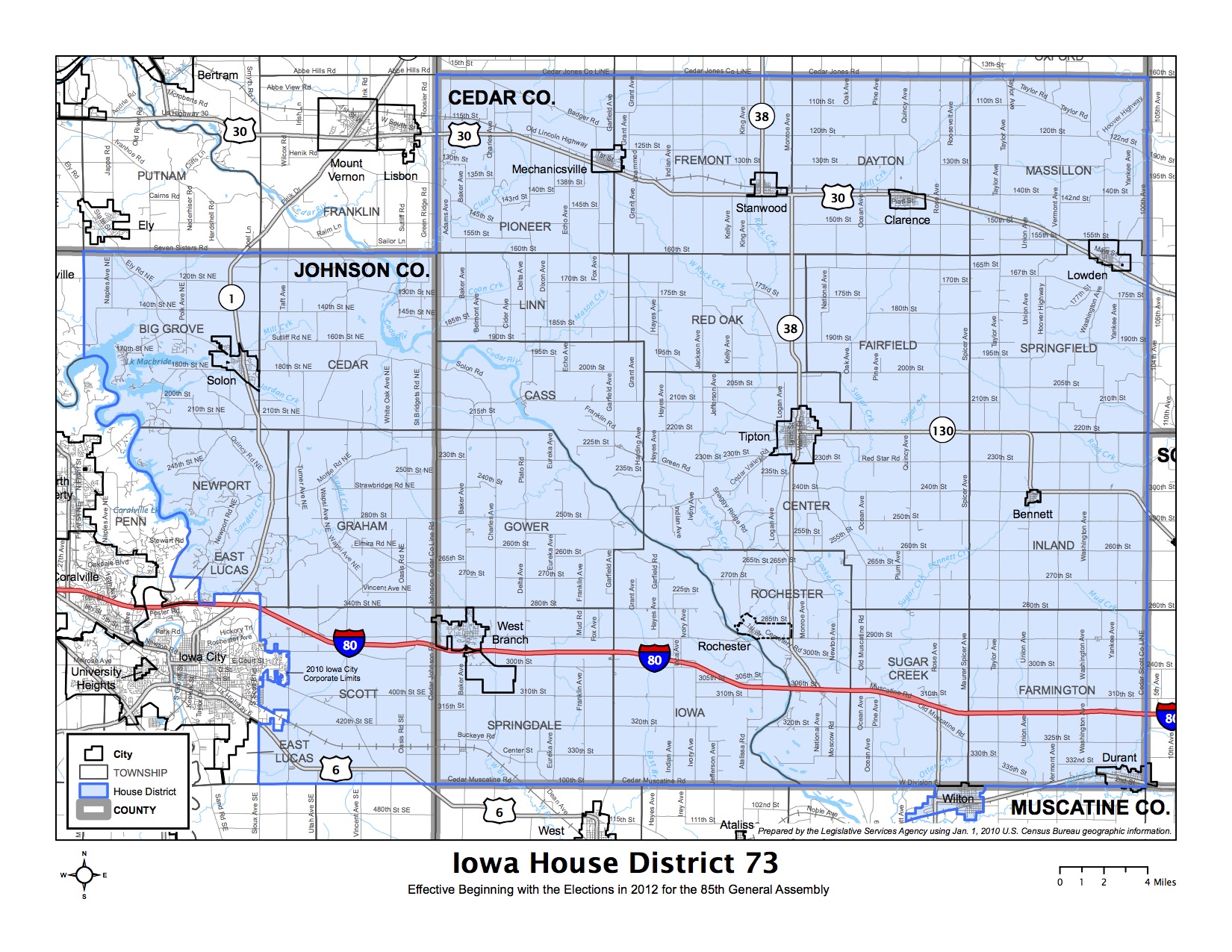
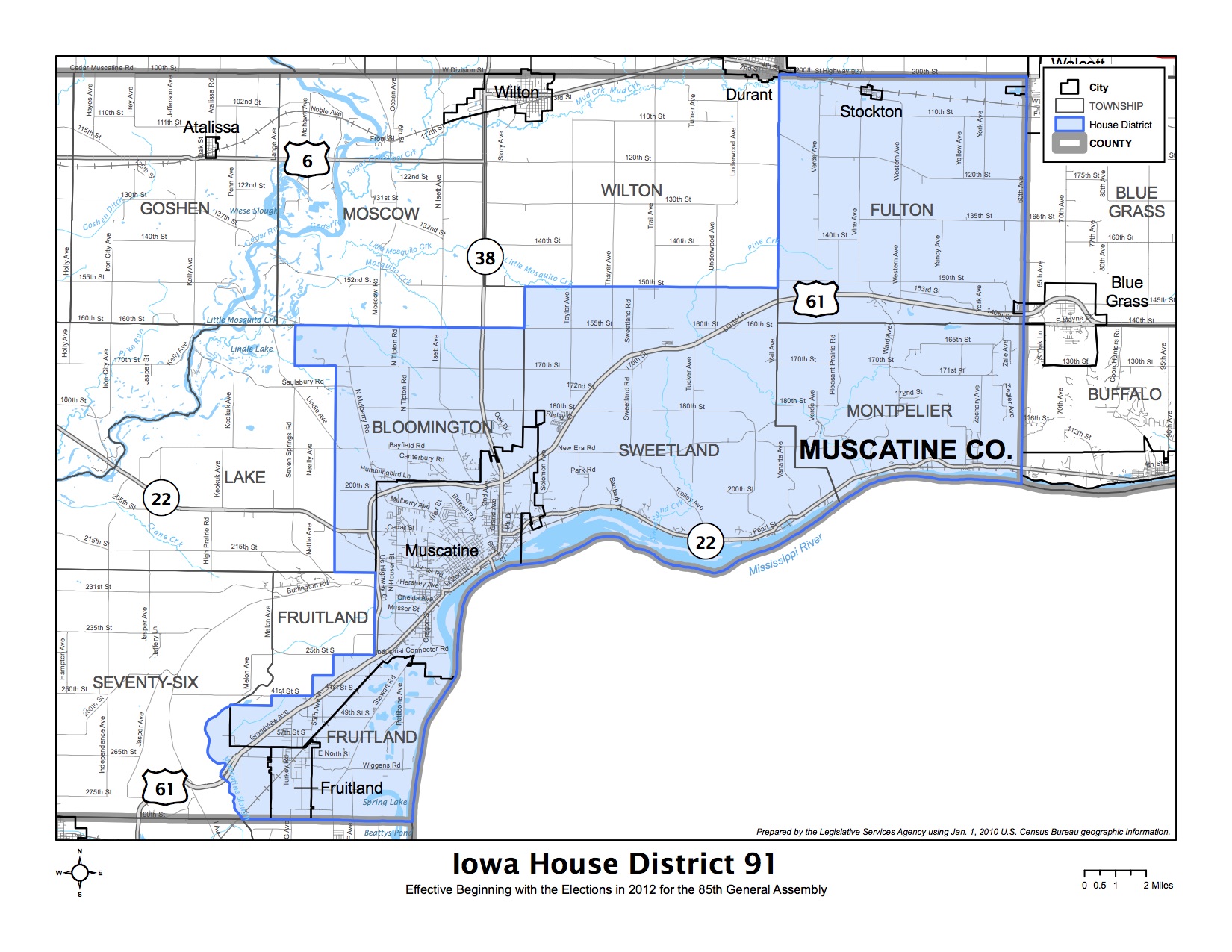
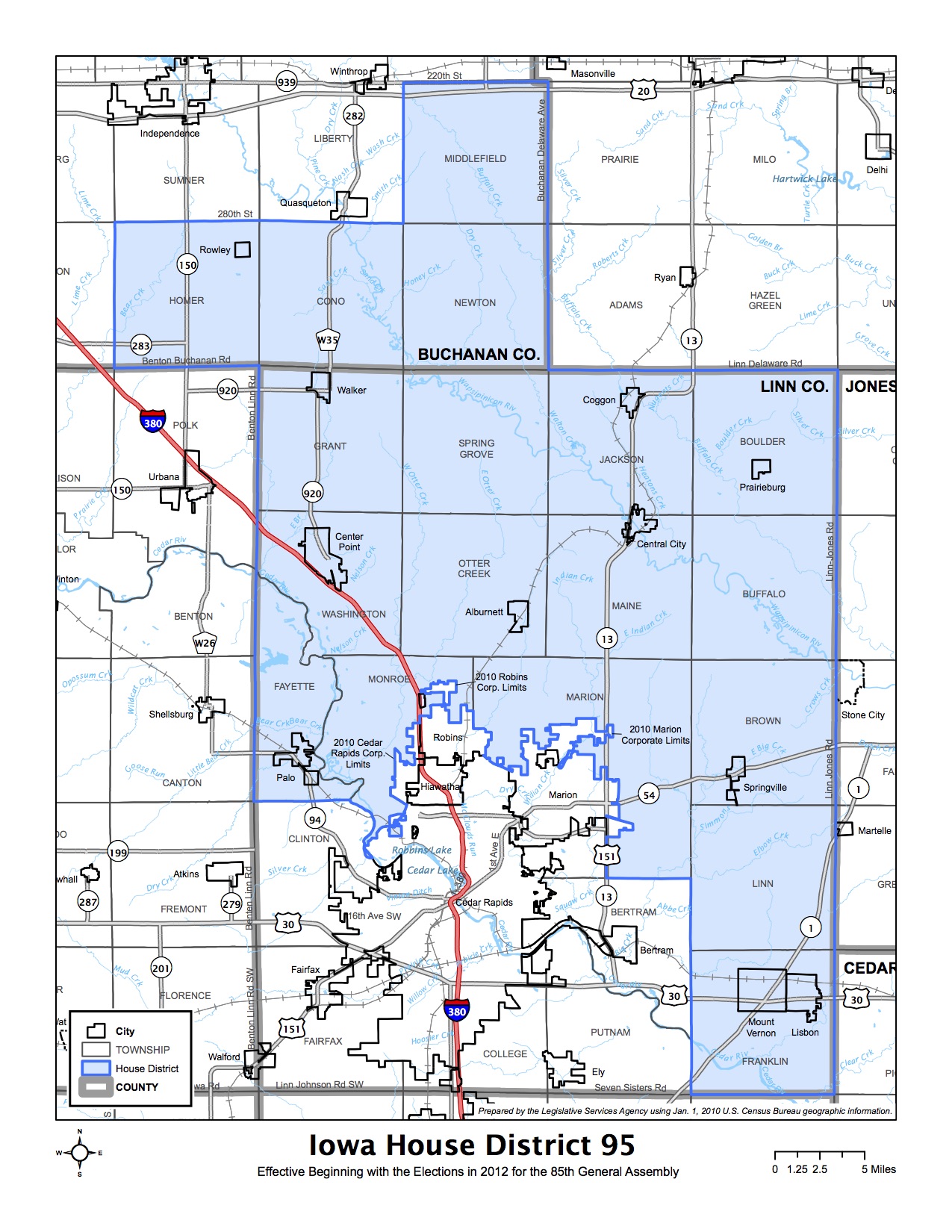
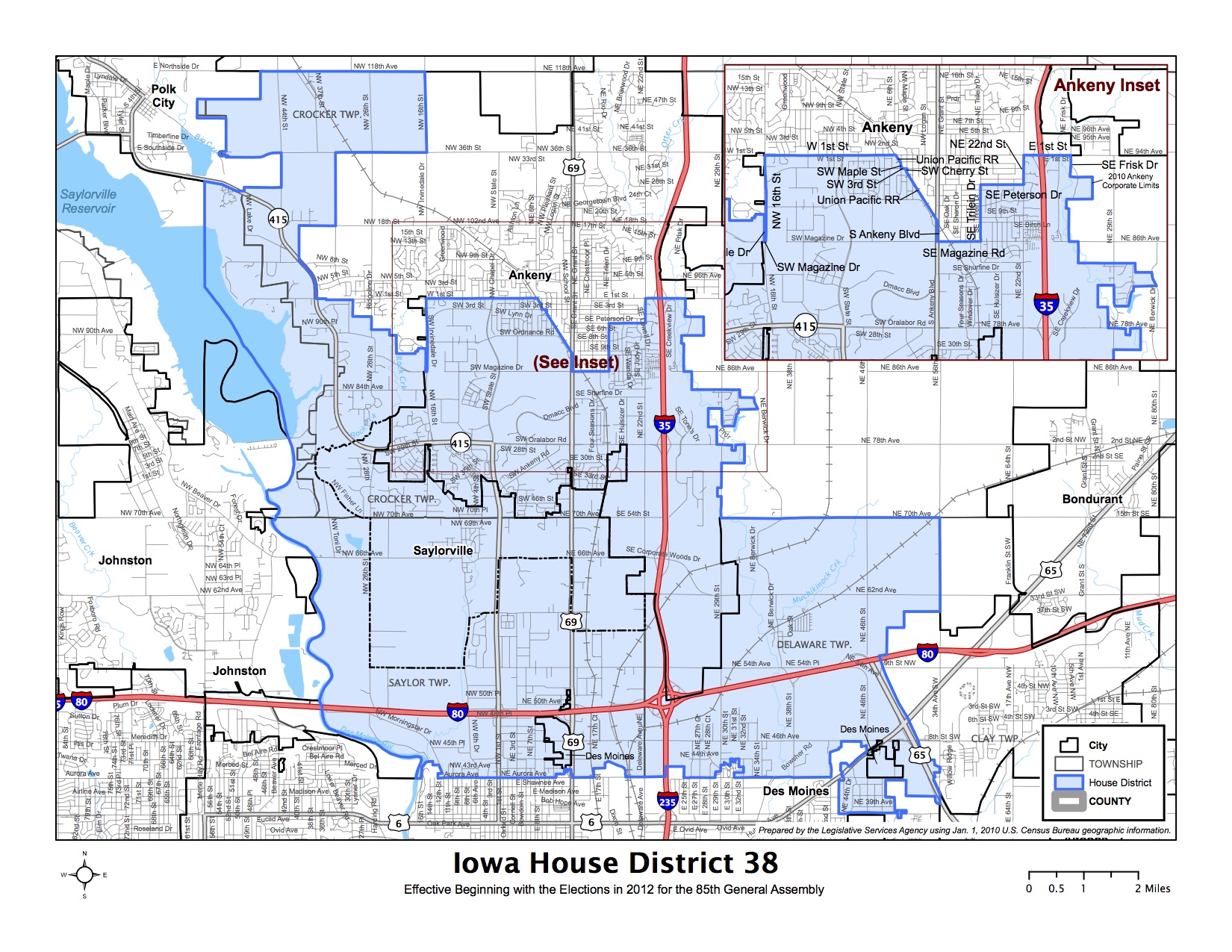
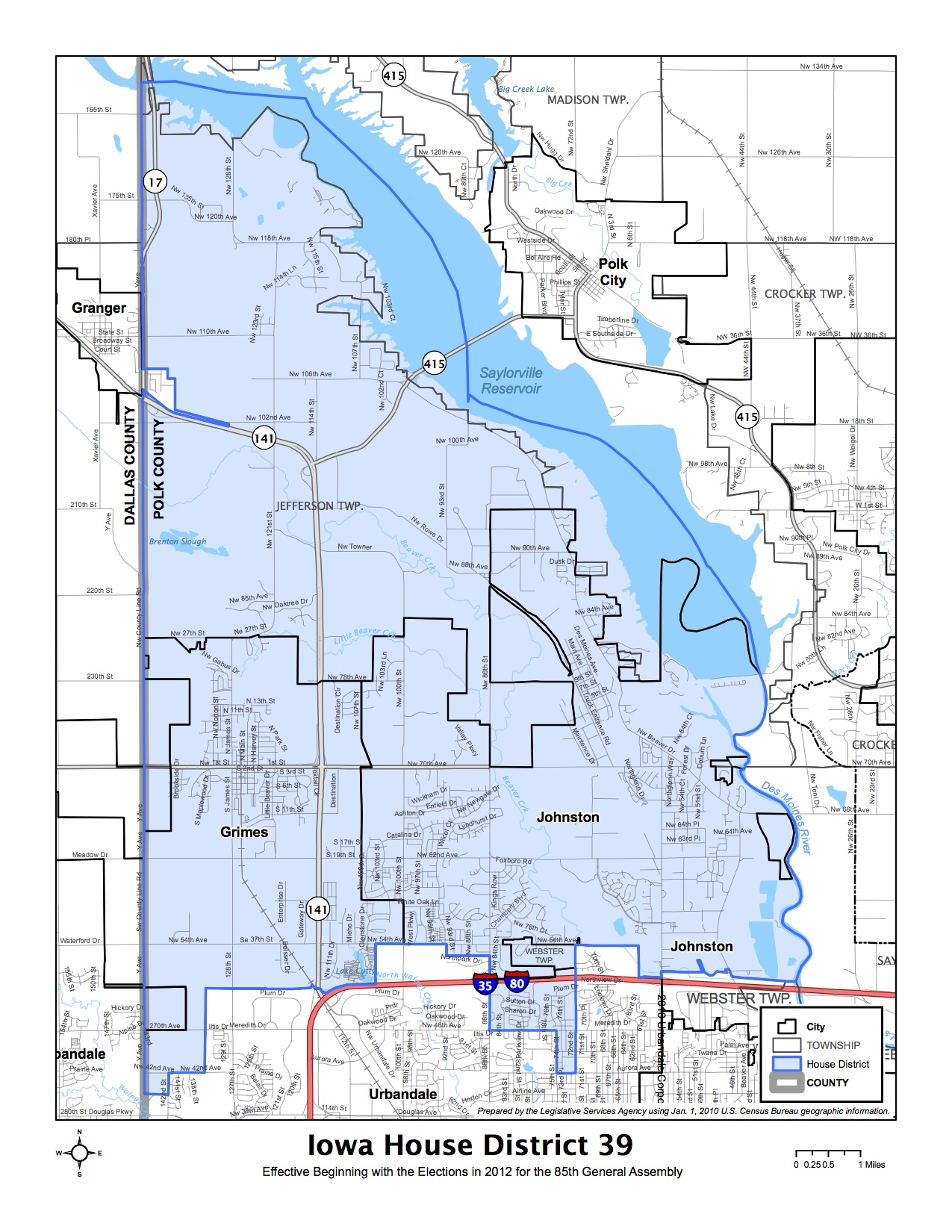
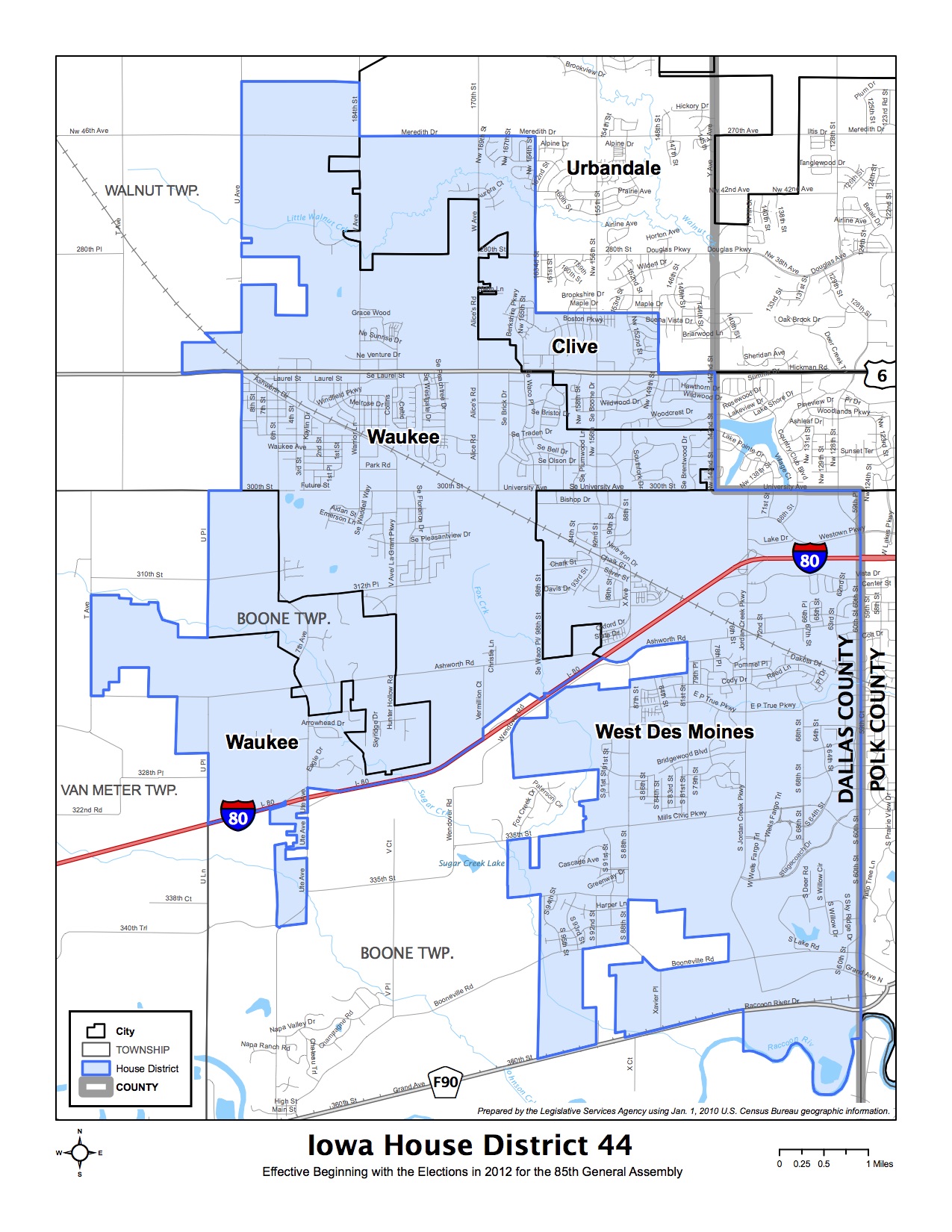
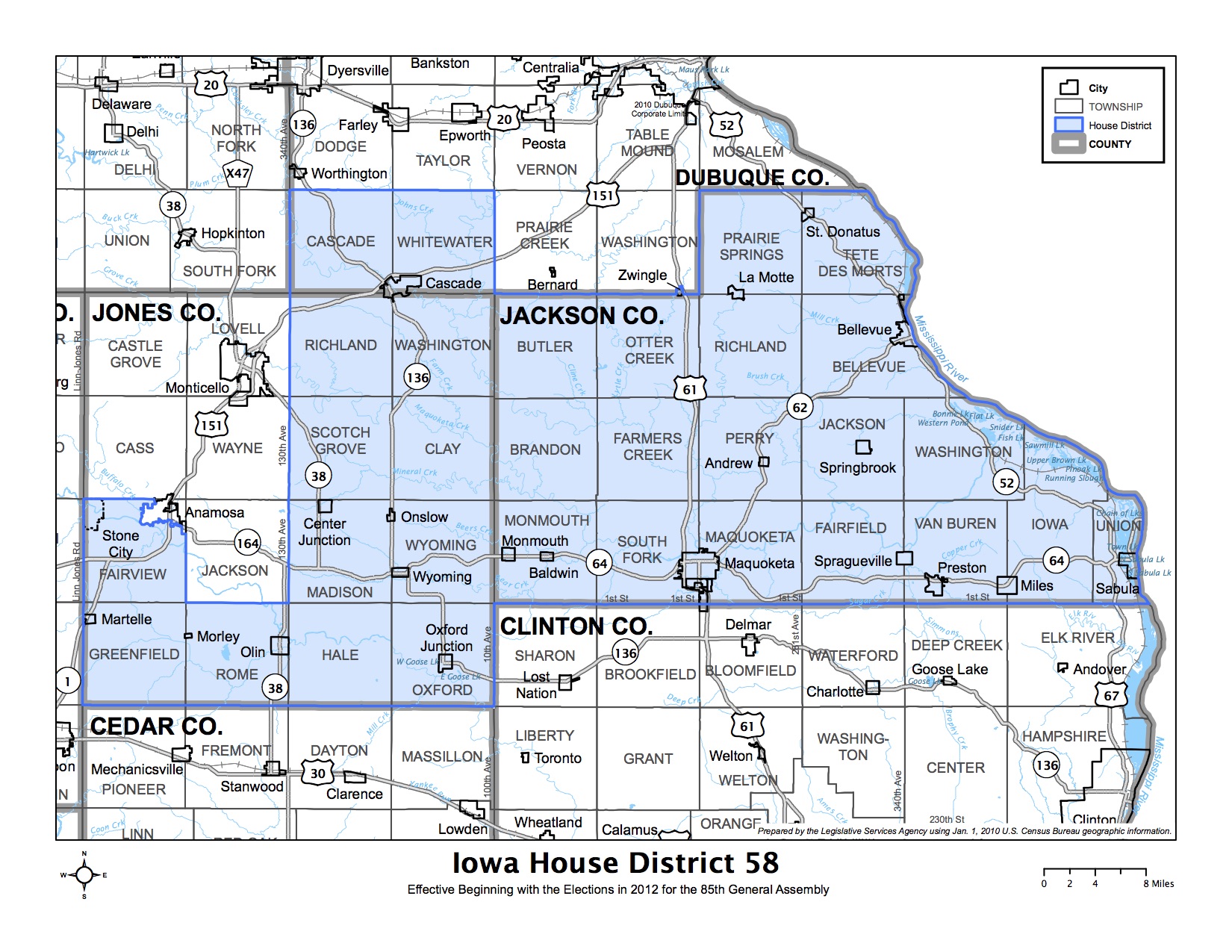
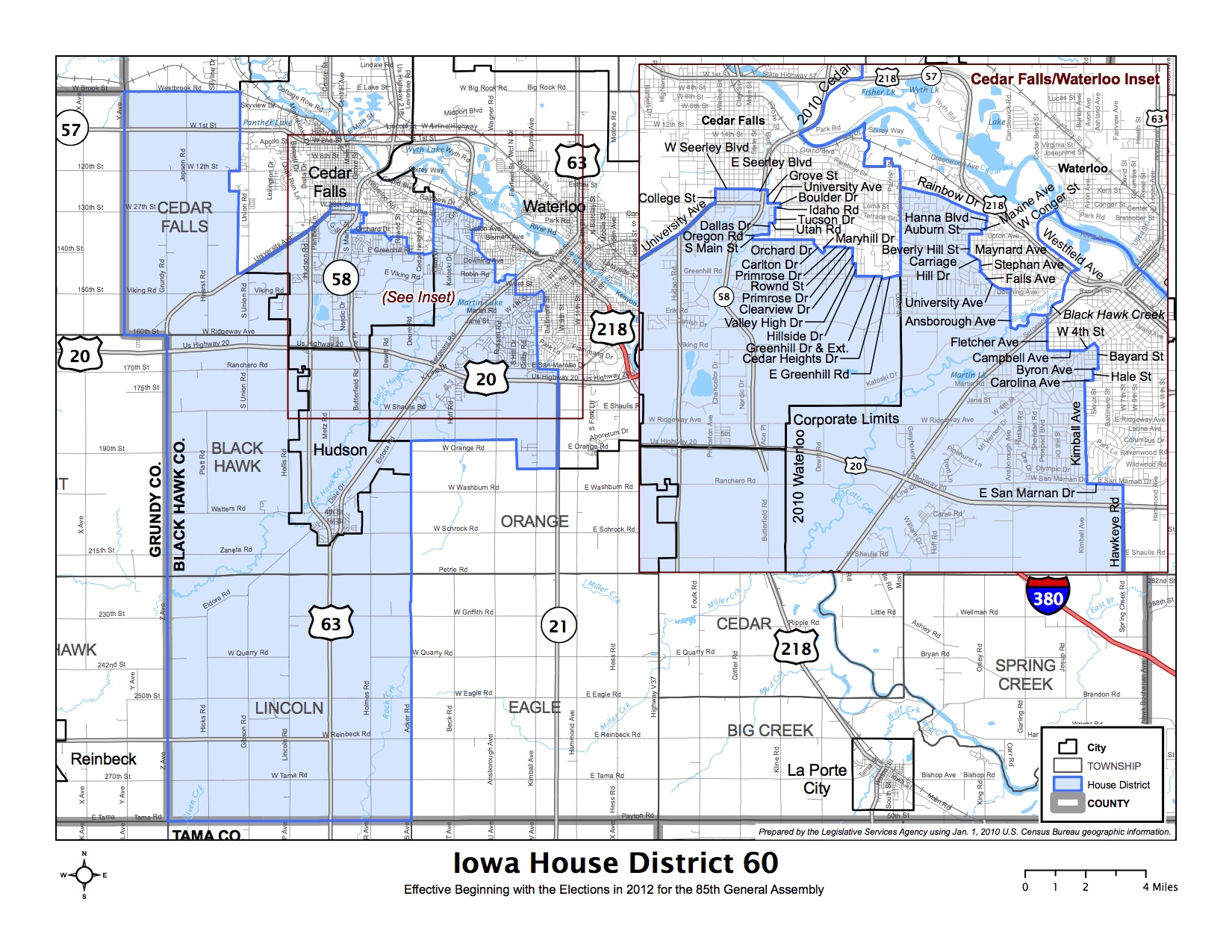
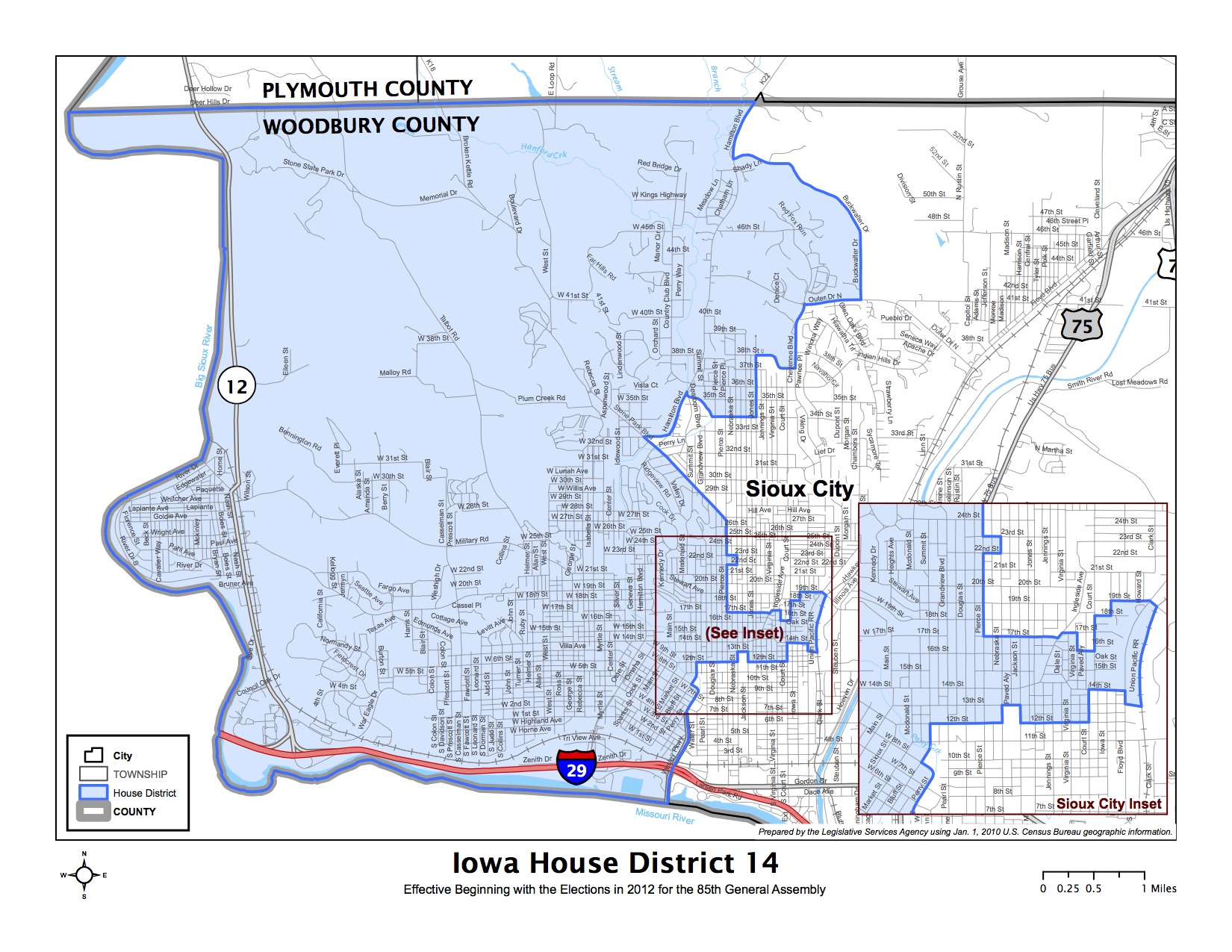
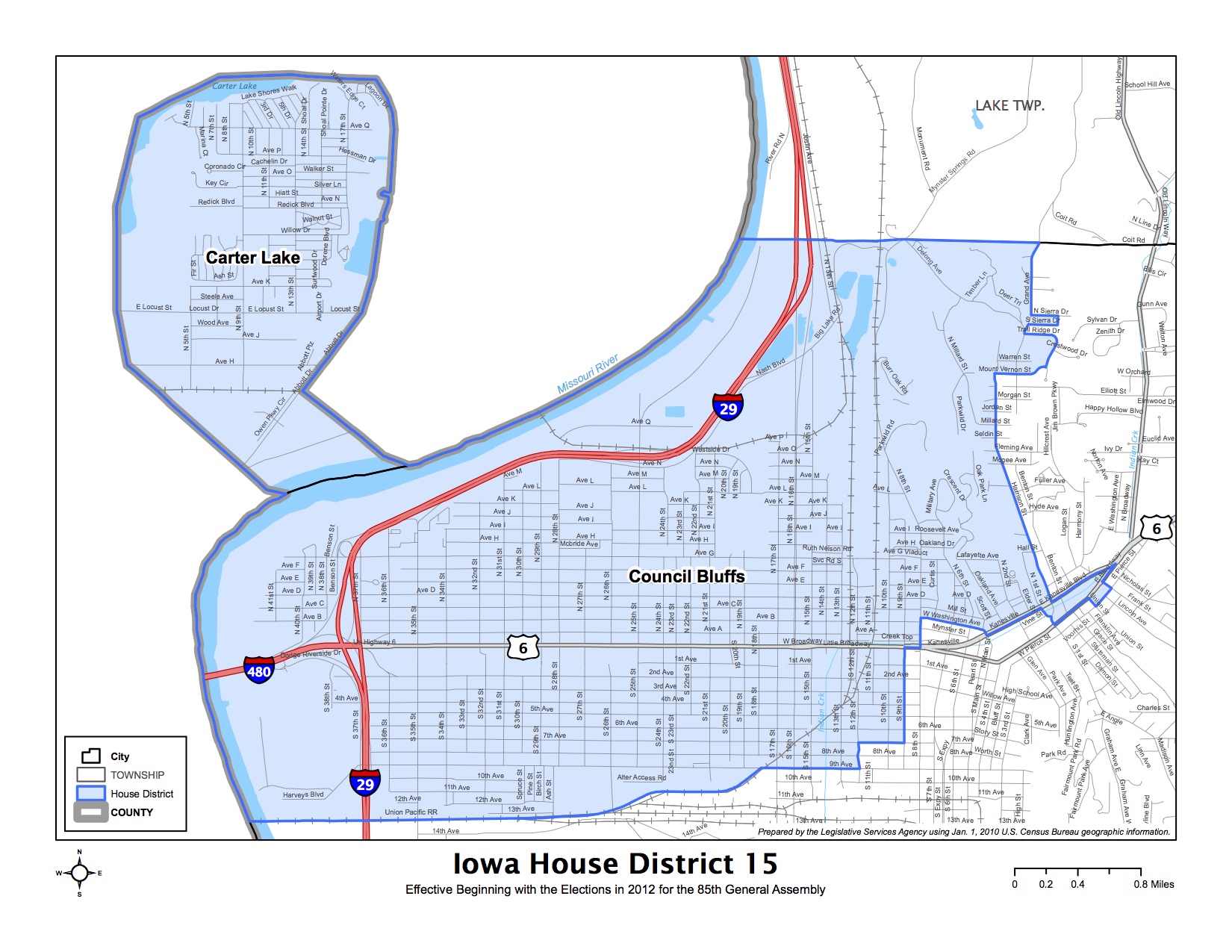
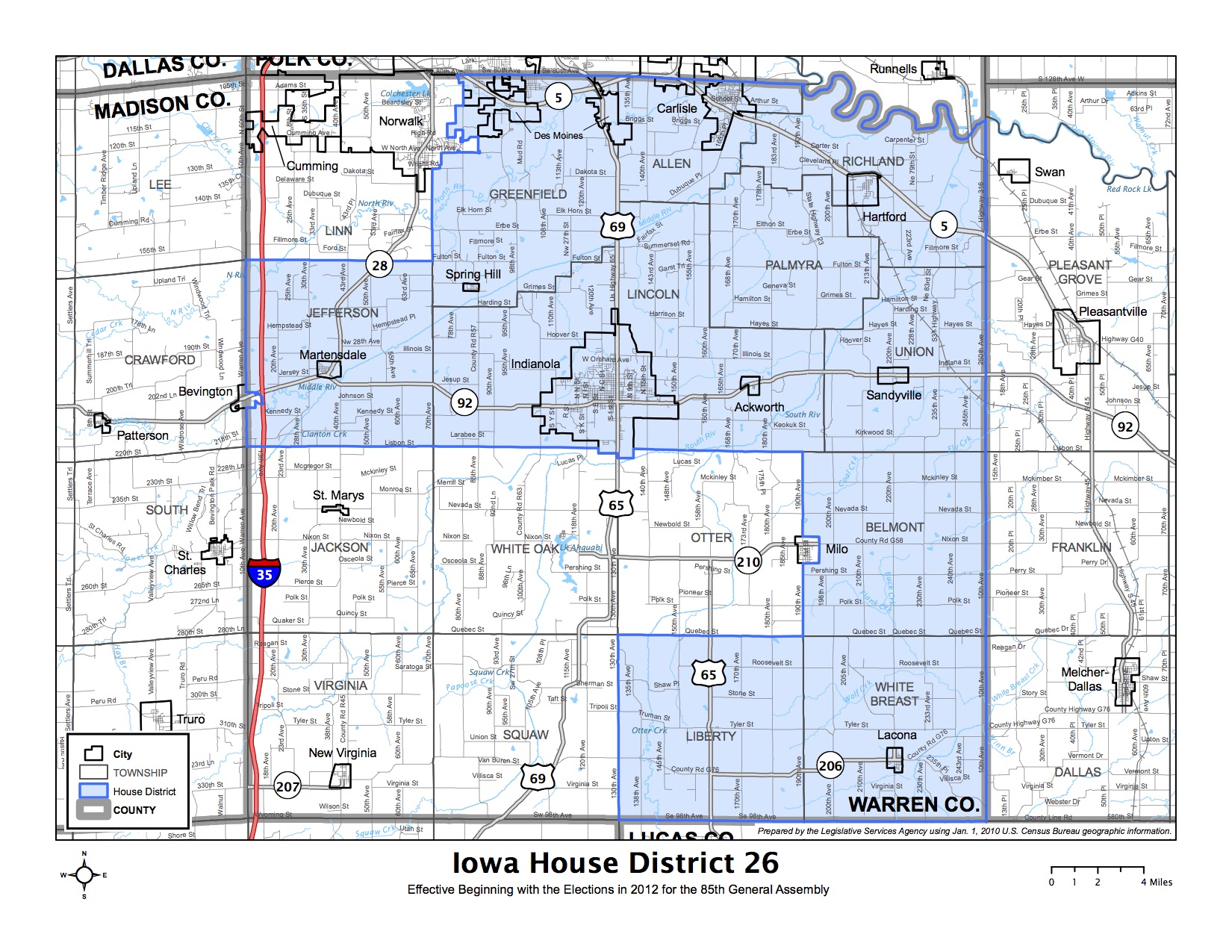
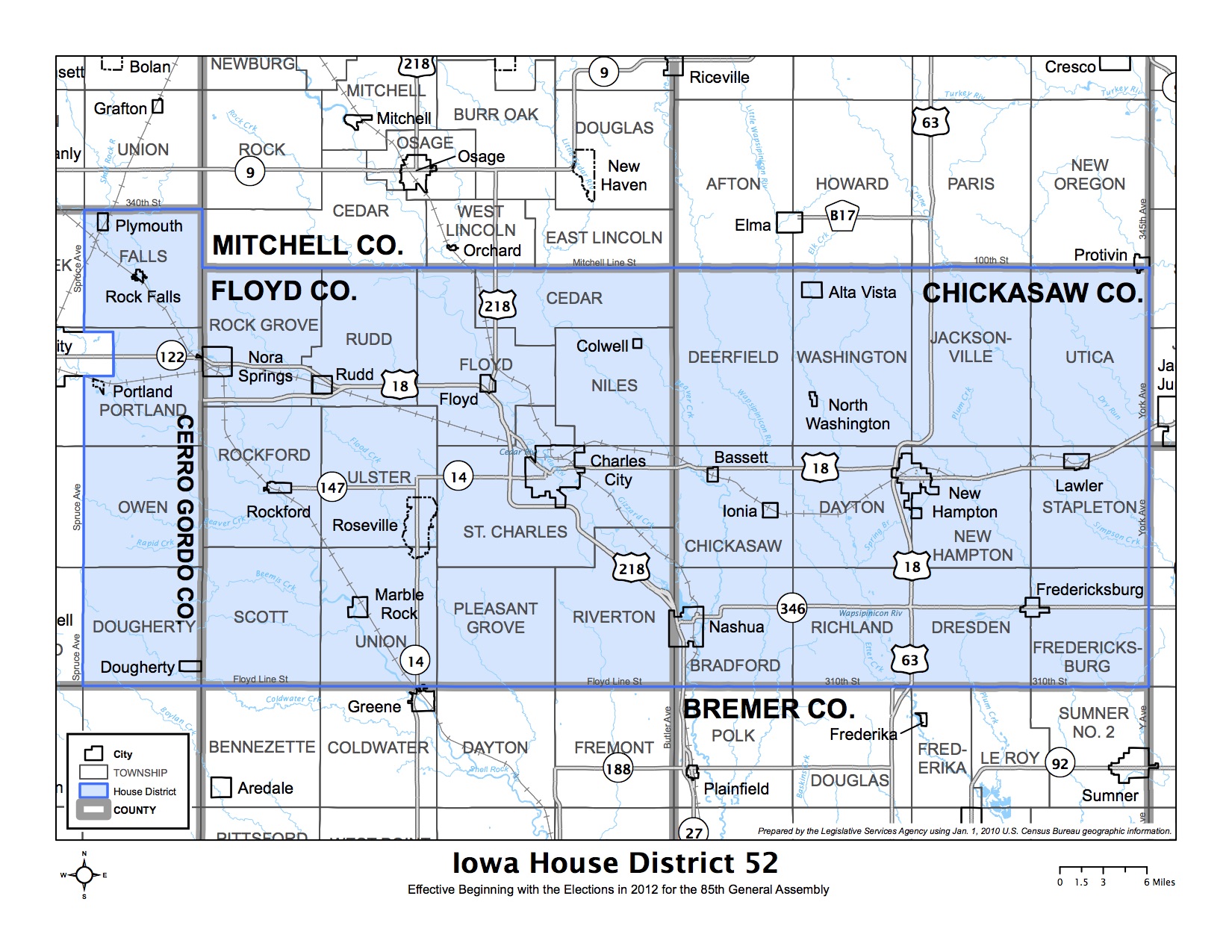
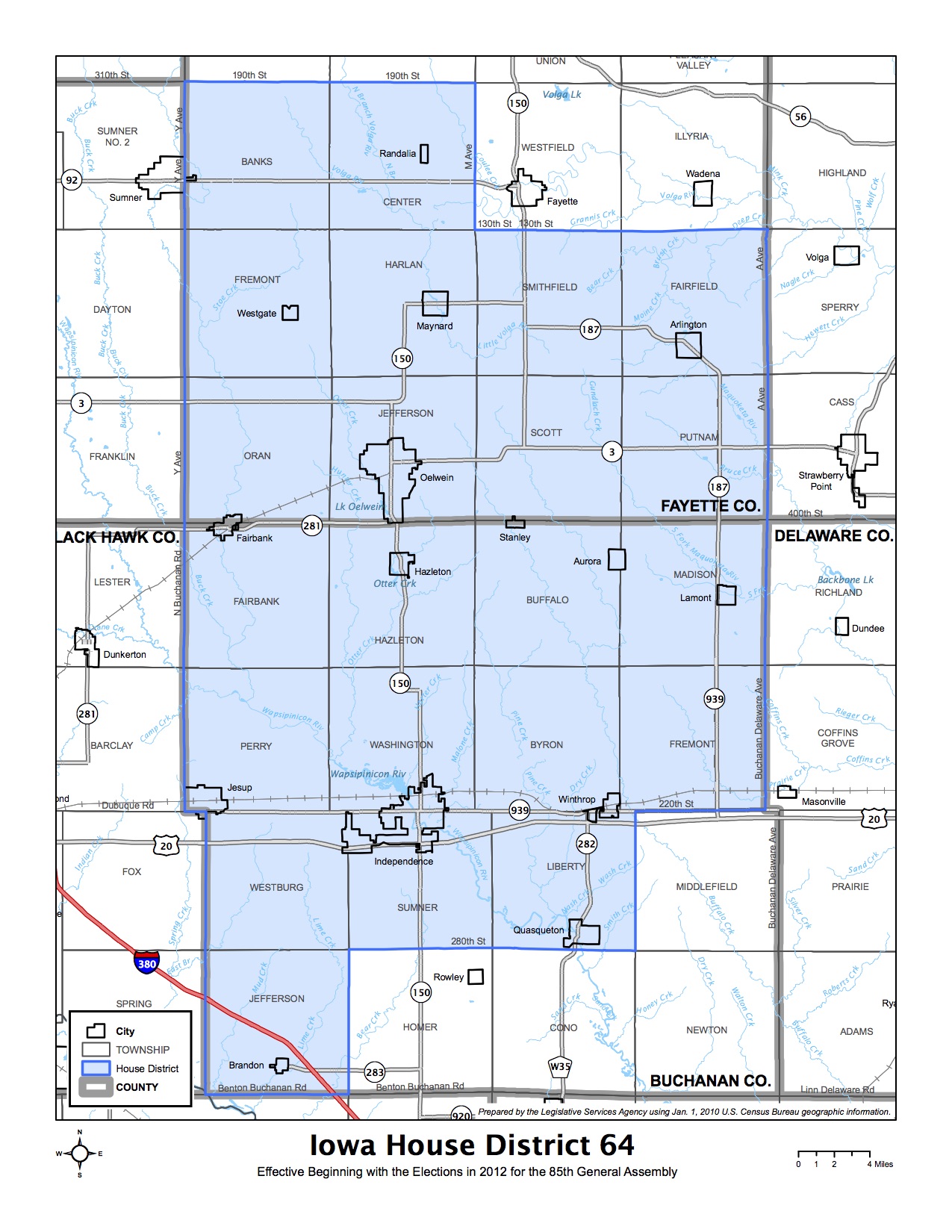
9 Comments
HD 73
I disagree with the comment “all bets are off,” if Bobby Kaufmann does not run again for state representative. The reason I say this is the Kaufmann family lives in this district and Jeff Kaufmann’s long investment in Cedar County, by representing it in the state house and on the board of supervisors, and consulting with his son during his campaigns, will continue the long control their family has had in the district for the next cycle. If no Bobby in HD73, what about his first younger brother who did heavy lifting as a door knocker when Bobby ran and also clerked for him (not sure how many times). After redistricting, we’ll have to see a map. As I pointed out elsewhere, Jodi Clemens didn’t even carry every precinct (of six) in Johnson County in 2018, and she had reasonably broad support among Johnson County Democrats. There is a winning coalition that voted both for Loebsack and Kaufmann in Johnson County. With both of them gone in 2020, the smart money says that coalition stays together and reforms around candidates they believe best represent their interests. If they are both Democrats, fine. Yet if they are both Republicans they wouldn’t be party-bound.
biggrovewalker Mon 6 May 1:53 PM
fair point
I didn’t know about the brother. Anyone named Kaufmann would be difficult to beat in Cedar County.
Laura Belin Tue 7 May 12:32 AM
I have a general question about House races
Like so many others, I would desperately like the House to be flipped. If I donate directly to the Iowa Democratic Party, can I trust the Party to know how to use the donation most effectively to try to accomplish that? I have donated to a few Iowa Democratic candidates over the past few decades who then ran rather awful campaigns. (I certainly don’t expect wins every time, but I do expect reasonably-smart campaigning.) I’m wondering if a donation to the party is the better way to go for House-flipping. Or would donating to individual candidates be better? How can donors know what is most effective?
PrairieFan Mon 6 May 3:27 PM
Compromise
I spread my donations around so I’m not much invested in any one campaign. I trusted Mark Smith so I gave to the House Democrats, too. You could also concentrate on the recent winners who are going for re-election but aren’t entrenched yet. You know they ran one good campaign already.
iowavoter Mon 6 May 6:40 PM
I mostly donate directly to candidates
You can’t rely on the House Truman Fund to invest in all of the challengers who may have a real shot at winning, or to recognize which incumbents may be in danger. House districts 16 and 82 were examples of that in 2018.
Laura Belin Mon 6 May 8:13 PM
What if it's a 50-50 tie in the Iowa House?
Would it result in a power-sharing agreement similar to the one that the Iowa Senate had a few years back?
ghbraves Mon 6 May 3:55 PM
I assume so
I can’t think of any other way to resolve it, other than power-sharing like the 25-25 Iowa Senate used in 2005 and 2006, when both caucus leaders had to agree to bring legislation to the floor. I suppose Republicans could try to play dirty but I don’t know how they could force the issue.
Laura Belin Mon 6 May 8:14 PM
Given that...
Perhaps all the Democrats need are 3 seats, as a tie would effectively break the trifecta. Looking at your well researched list tells me that gaining 3 in the state House is far, far easier than gaining 4.
ghbraves Mon 6 May 9:25 PM
Dems are winning the money game
I used this as a guide to check today’s finance reports. Where reports are available (there are a few stragglers), Dems are VASTLY out-raising Reps in each of these districts except for 2. You had HD9 listed as a Dem pickup opportunity, but they aren’t running a candidate there, and Pulkrabek is running just behind Kaufmann in HD73. A lot of these aren’t even close in terms of the money game, based on reports today.
There’s not a lot of relief in the party coffers for Reps either. Reps raised $460k, have $790k on hand. Dems $580k, have $1.7 mil.
Republicans are probably shaking in their boots.
tylerhiggs Mon 20 Jul 8:02 PM